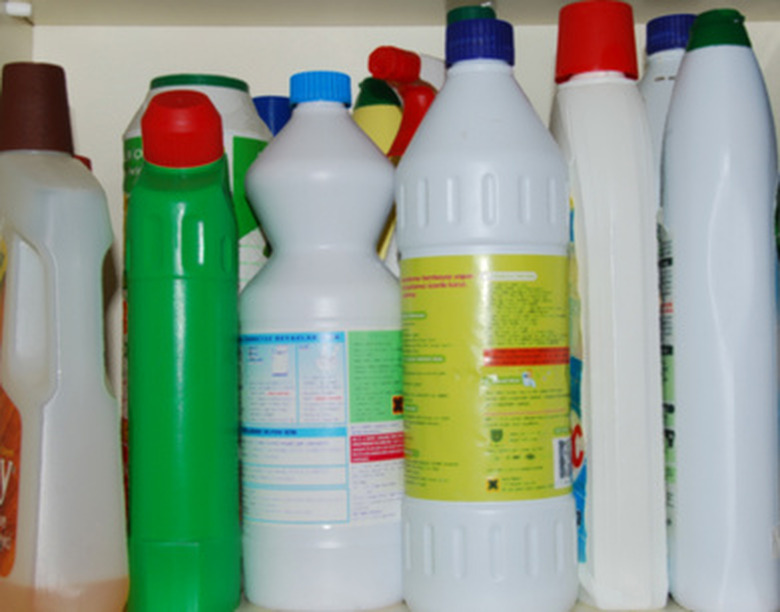How To Restore Natural Rubber Products
Natural rubber is made from the sap of the rubber tree, which is drained off, heated, and formed into rubber parts. Rubber has many uses; it is water-resistant, flexible, strong, and elastic. That said, over time natural rubber will tend to dry out, stiffen, and crack. It is often cheaper and easier to replace the cracked part, but it is also possible to restore natural rubber's elasticity and softness with some basic household cleaning chemicals and a bit of time.
Restoring Rubber With Ammonia
Step 1
Use ammonia to restore natural rubber. Ammonia is often used to wash bathroom fixtures and can be used for laundry as well. Ensure that the ammonia is pure, and doesn't contain any detergents or other chemicals.
Step 2
Clean the rubber item you are restoring. Scrub it thoroughly with a wire brush and wash it with water until the water dripping from it is perfectly clear.
Step 3
Pour some ammonia into a pot of warm water and immerse the rubber article in the water for 1 to 2 hours. This will be enough time for the ammonia to evaporate. Follow the directions on the ammonia bottle for guidelines as to how much ammonia to add to the water.
Step 4
Restore thicker pieces of tubing by filling them with ammonia water, plugging their ends, and boiling them in a pot of water set to a low boil for 1-2 hours.
Restoring Rubber With Glycerine
Step 1
Wash and scrub the rubber item until it is clean.
Step 2
Wrap a wad of cotton in stiff wire that can serve as a handle. A bent coat hanger works well.
Step 3
Heat up the rubber piece in a pot of boiling water.
Step 4
Pull the rubber out of the boiling water, then dip the cotton wad into some glycerine, and wipe down the rubber item with it. Let it dry for 24 hours, then heat the rubber again and wipe it down with more glycerine.
Restoring Rubber With Lye
Step 1
Mix up a solution of 95 percent water and 5 percent lye.
Step 2
Heat the lye solution to between 86 and 104 degrees.
Step 3
Immerse the rubber piece in the lye solution for 10 days. You will need to replace the lye regularly, as it will dissolve away.
Step 4
Rinse off the caustic soda that forms on the rubber with water, then scrape the rubber piece with a knife to remove any crusty outer layer. The remaining rubber will be soft and pliable again.
Things Needed
- Ammonia
- Glycerine
- Lye
- Water
- Stove
- Wire brush
- Wire coat hanger
Warning
Always wear gloves when working with cleaning chemicals. Many of them are quite caustic and will damage your skin. Ensure that you are doing this in a well-ventilated area where there are no children around.
References
Cite This Article
MLA
Smyth, Joshua. "How To Restore Natural Rubber Products" sciencing.com, https://www.sciencing.com/restore-natural-rubber-products-7593605/. 24 April 2017.
APA
Smyth, Joshua. (2017, April 24). How To Restore Natural Rubber Products. sciencing.com. Retrieved from https://www.sciencing.com/restore-natural-rubber-products-7593605/
Chicago
Smyth, Joshua. How To Restore Natural Rubber Products last modified March 24, 2022. https://www.sciencing.com/restore-natural-rubber-products-7593605/
